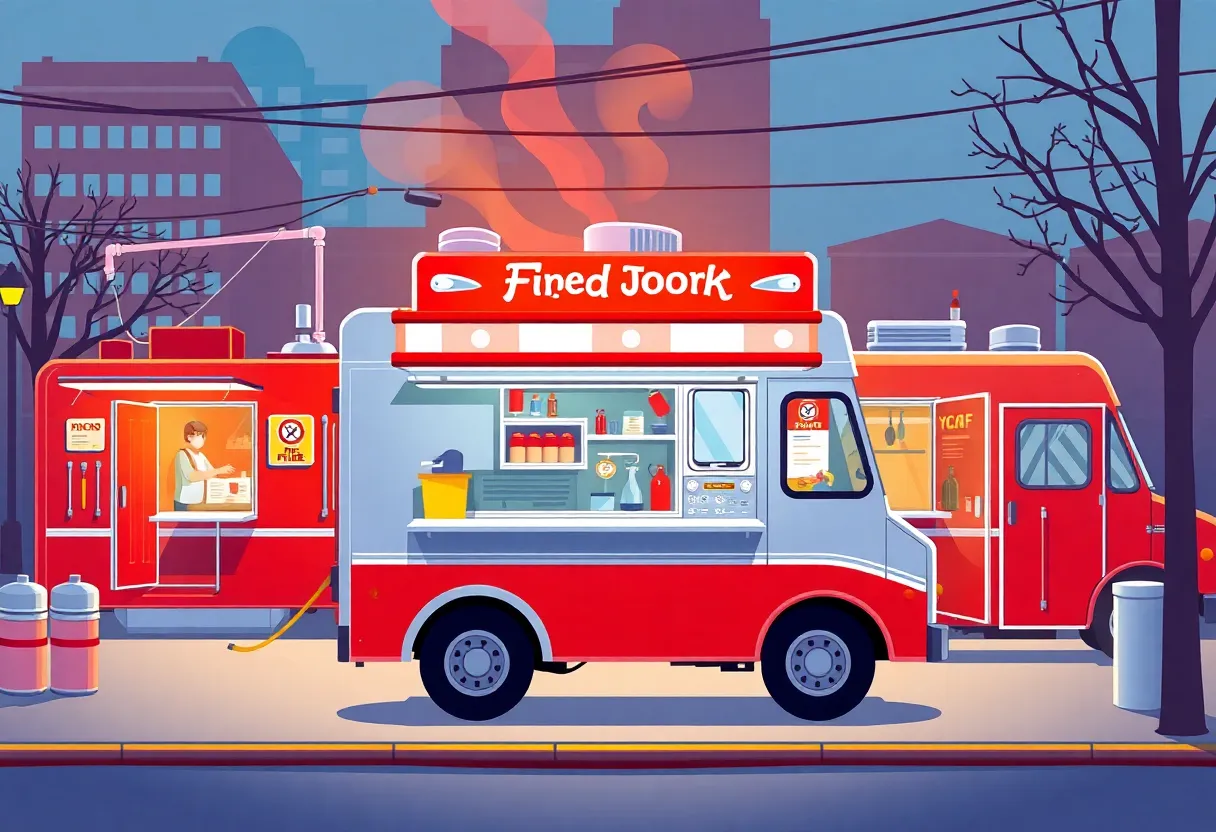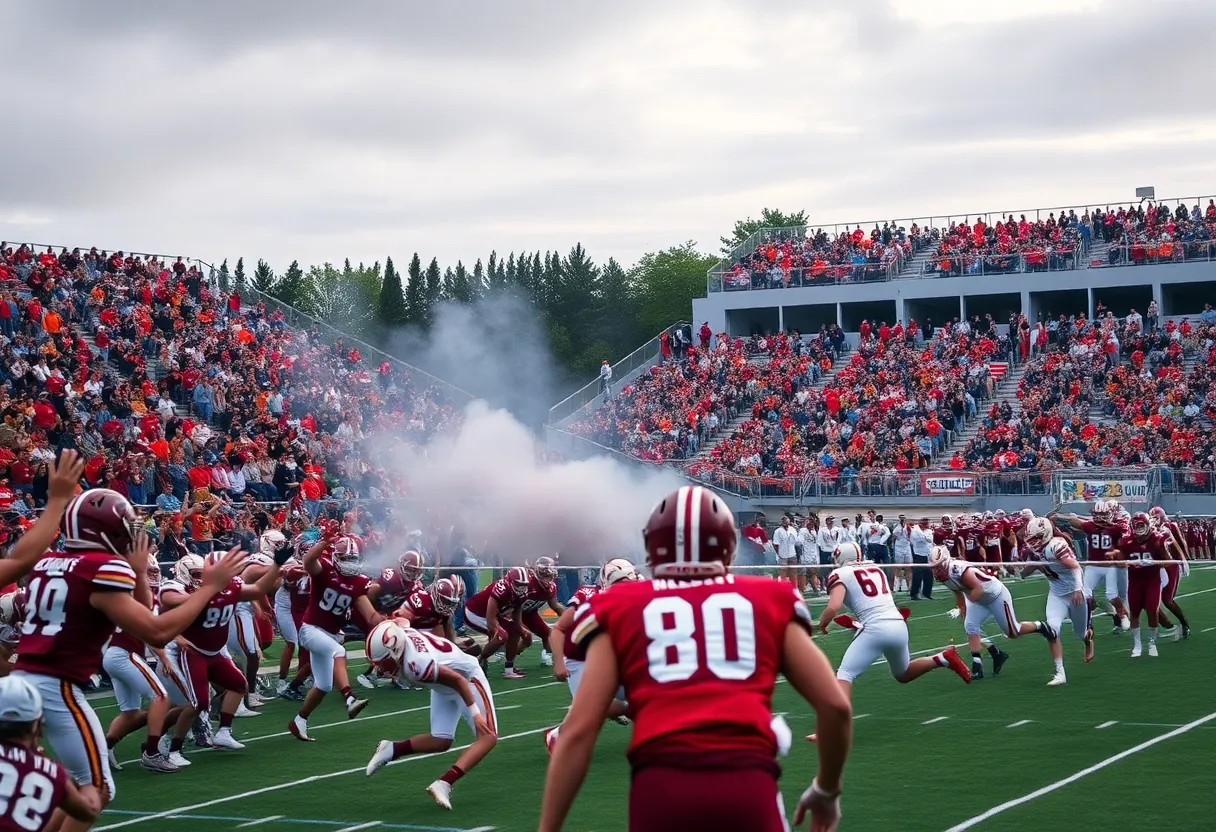Oklahoma City, October 22, 2025
Oklahoma City has launched a new permitting process for fire suppression systems in food trucks, receiving praise from local entrepreneurs and officials. This streamlined approach reduces the administrative burden on vendors, allowing for quicker approvals and enhanced safety. The changes are expected to promote entrepreneurship in the burgeoning food truck industry by potentially increasing the number of operating food trucks by 25%, while ensuring compliance with essential fire safety standards.
Oklahoma City Approves New Food Truck Fire Suppression Permitting Process
Oklahoma City has introduced a streamlined permitting process for fire suppression systems in food trucks, as commended by State Rep. Fetgatter. This new regulation reduces compliance burdens for mobile food vendors, allowing them to operate more efficiently while prioritizing safety. Local business owners have welcomed the change, noting it supports innovation in the growing food truck industry without compromising essential fire safety measures.
Details of the New Regulation
The permitting process simplifies the steps required for food trucks to install and maintain fire suppression equipment, a critical safety feature in mobile kitchens where cooking fires pose significant risks. Previously, obtaining these permits involved multiple layers of paperwork and inspections, often delaying business launches by weeks or months. Under the updated system, vendors can submit applications online and receive approvals within days, cutting down on administrative hurdles.
State Rep. Fetgatter highlighted the regulation’s role in fostering a more supportive environment for small businesses. By easing these requirements, the state aims to encourage entrepreneurship in the food service sector, particularly for operators who rely on mobility to reach diverse customer bases at events, markets, and urban areas.
Projected Industry Growth and Safety Enhancements
Experts anticipate that this change could lead to a 25% increase in the number of food trucks operating across the state. The growth potential stems from lower entry barriers, making it easier for aspiring entrepreneurs to enter the market. In Oklahoma, the food truck sector has already seen steady expansion, driven by consumer demand for quick, diverse dining options like tacos, barbecue, and gourmet sandwiches served from wheels.
Safety remains at the forefront of the regulation. Fire suppression systems, which include automatic extinguishers and heat sensors, are mandatory for all food trucks to mitigate risks from open flames and high-temperature cooking. The new process ensures these systems meet national standards set by organizations like the National Fire Protection Association, but delivers compliance in a more user-friendly manner. This balance allows businesses to innovate—such as experimenting with new menu items or expanding routes—while upholding public safety.
Local Reactions and Economic Impact
Entrepreneurs in Oklahoma City and surrounding areas have expressed appreciation for the initiative. They view it as a practical step that addresses real-world challenges, like the high cost and time associated with traditional permitting. One vendor noted that quicker approvals mean faster revenue generation, which is vital for startups with limited capital.
The economic ripple effects could be substantial. Food trucks contribute to local economies by creating jobs, from drivers and cooks to suppliers of fresh ingredients. A projected 25% rise in statewide operations might generate hundreds of new positions and boost related sectors, such as produce farming and equipment manufacturing. In urban centers like Oklahoma City, where street food scenes are vibrant, this could enhance community events and tourism, drawing more visitors to sample local flavors.
Background on Food Truck Regulations in Oklahoma
The food truck industry in Oklahoma has evolved significantly over the past decade. What began as a niche market has become a staple of the state’s culinary landscape, with vendors parking at high-traffic spots and participating in festivals. However, regulatory frameworks have historically lagged behind this growth, leading to complaints about overly complex rules that favored brick-and-mortar establishments.
Prior to this update, fire suppression permitting required separate approvals from local fire departments and health inspectors, often leading to inconsistencies across counties. The new state-level approach standardizes the process, ensuring uniformity while respecting local variations. This aligns with broader efforts to modernize business regulations, making Oklahoma more attractive for small-scale operations.
Health and zoning laws continue to govern food truck placements, requiring operators to secure temporary permits for specific locations and adhere to sanitation standards. The fire suppression update complements these by focusing on a key safety aspect, demonstrating the state’s commitment to a balanced regulatory environment.
As implementation rolls out, stakeholders will monitor how the 25% growth projection materializes. Early indicators suggest positive momentum, with several new food truck businesses already applying for permits under the streamlined system. This development underscores Oklahoma’s push to support entrepreneurship, ensuring that mobile dining remains a safe, accessible, and thriving part of the economy.
FAQ
What is the new food truck fire suppression permitting process?
The new food truck fire suppression permitting process streamlines operations for mobile vendors in Oklahoma, reducing compliance burdens and enhancing safety without stifling small business innovation.
How does the regulation impact food truck numbers?
The regulation eases compliance burdens, potentially increasing food truck numbers by 25% statewide.
What do local entrepreneurs think of the change?
Local entrepreneurs praise the move for enhancing safety without stifling small business innovation.
Who commended the new process?
State Rep. Fetgatter commended the new food truck fire suppression permitting process.
Key Features Chart
| Feature | Description |
|---|---|
| Streamlined Process | Simplifies permitting for fire suppression systems, reducing administrative hurdles for mobile vendors. |
| Compliance Reduction | Eases burdens, allowing faster operations while maintaining safety standards. |
| Growth Projection | Potentially increases food truck numbers by 25% statewide. |
| Entrepreneur Support | Praised for enhancing safety without stifling innovation in small businesses. |
| State-Level Scope | Applies across Oklahoma, commended by State Rep. Fetgatter. |





